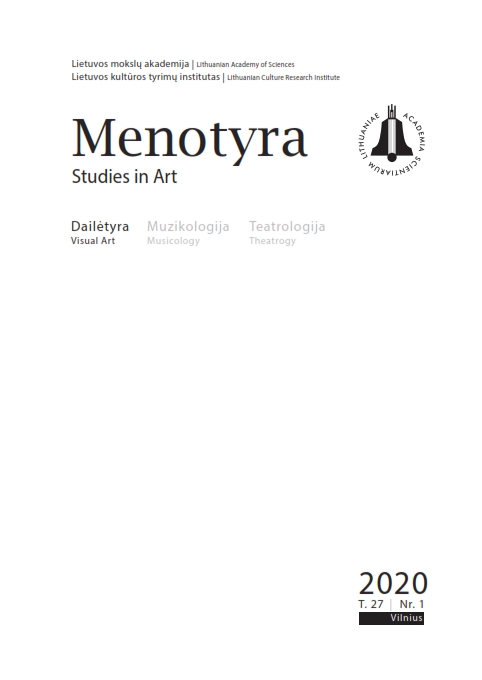Žydų dailė žydų politinės autonomijos laikotarpiu Lietuvoje 1919–1924 m.
Jewish Art in the Period of Jewish Political Autonomy in Lithuania, 1919–1924
Author(s): Evelina BukauskaitėSubject(s): Fine Arts / Performing Arts, Jewish studies, Visual Arts, History of Art
Published by: Lietuvos mokslų akademijos leidykla
Keywords: Jewish art; Jewish national and cultural autonomy; Kultur Lige; publishing house Likht; Issachar Ber Ryback;
Summary/Abstract: The paper addresses Jewish art life during the short yet vivid period of Jewish national and cultural autonomy in Lithuania from 1919 to 1924. The Culture section of the Jewish National Council supported cultural progress and tried to organize an exhibition of Lithuanian Jewish artists in Berlin in 1920-1921. Young artists such as Sara Gorschen, Feiga Blumberg, Sholom Zelmanovich and, probably, P. Cheiskes with Bencion Zukerman could have had a chance to represent modern Lithuanian Jewish art had the exhibition been held. Another part of the artistic legacy of this period is represented by such artists from Kiev’s movement-organization “Kultur Lige” as Issachar Ber Ryback and Max Kaganovitch. I. B. Ryback created illustrations for the publishing house “Likht” (Hebrew for ‘light’ or ‘candle’), and the sculptor Max Kaganovitch worked mainly in the Jewish theatrical studio. Due to the complicated political climate, the process of Jewish autonomy in Lithuania ended in 1924, which triggered a short stagnation in Jewish cultural progress. A glimpse into the multilayered activity of Jewish artistic life in Lithuania during the period of Jewish national and cultural autonomy is the first attempt to restore complex but unique processes.
Journal: Menotyra
- Issue Year: 27/2020
- Issue No: 1
- Page Range: 107-124
- Page Count: 18
- Language: Lithuanian

